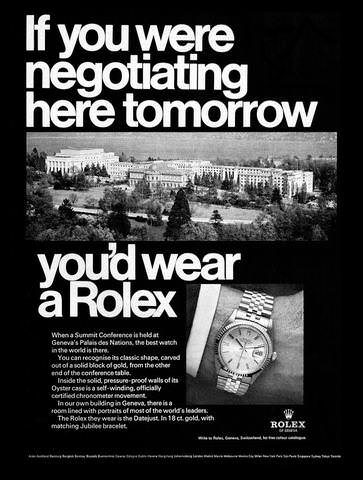While much of the attention of the modern collecting world is focused upon Rolex’s various sport watch lines, such as their Submariner or Daytona, possibly no other watch has played a larger role in the widespread and enduring success of the Rolex brand as the humble Datejust.

The Rolex Datejust was the world’s very first automatic wristwatch with a date-displaying window that would automatically change over at midnight. These features have become standard on most contemporary watches; however, at the time, they were completely revolutionary, and set the bar for how a date complication on a wristwatch should function.
The first Datejust, the reference 4467 was only available in 18-karat yellow gold, and was fitted with a new style of bracelet, the Jubilee, that was designed specifically for Rolex’s new, flagship watch. Originally, the Jubilee name was actually in consideration for the watch itself; however it ultimately ended up only being used for the iconic, five-piece, metal-link bracelet that has been an option on the Datejust line ever since.
Initially, the Datejust name did not make an appearance on the dial of the watch, and it was not until the reference 5030 and the reference 5031 that the Datejust name started to appear at all on Rolex’s date displaying watches. By the time Rolex released the reference 6074 and the reference 6075, the Datejust name had become a permanent fixture on the surface of the dial, and all subsequent renditions of the watch would be officially known by the Datejust name.
Throughout the decades of continuous production, Rolex has quietly updated and upgraded the Datejust design as better technologies and materials have become available. Countless variations have been produced; however, the core design elements that comprise the Datejust’s DNA have remained largely unchanged. This consistency, along with the classic design and timeless good looks of the Datejust, allows vintage examples to be every bit as aesthetically relevant as their contemporary equivalents.
Today the Datejust exists in a number of different case sizes, ranging from 26 mm to 41 mm in diameter; however, the classic men’s size has traditionally always had a case diameter of 36 mm. Additionally, no other line of Rolex watches is available from the factory with as many different dial, bezel, bracelet, and precious metal configurations, meaning that there is a perfect Datejust for every different aesthetic preference.

Check out 'Reference Tracks' our Spotify playlist. We’ll take you through what’s been spinning on the black circle at the C + T offices.

Never miss a watch. Get push notifications for new items and content as well as exclusive access to app only product launches.
Sign up for our newsletter to receive updates and exclusive offers